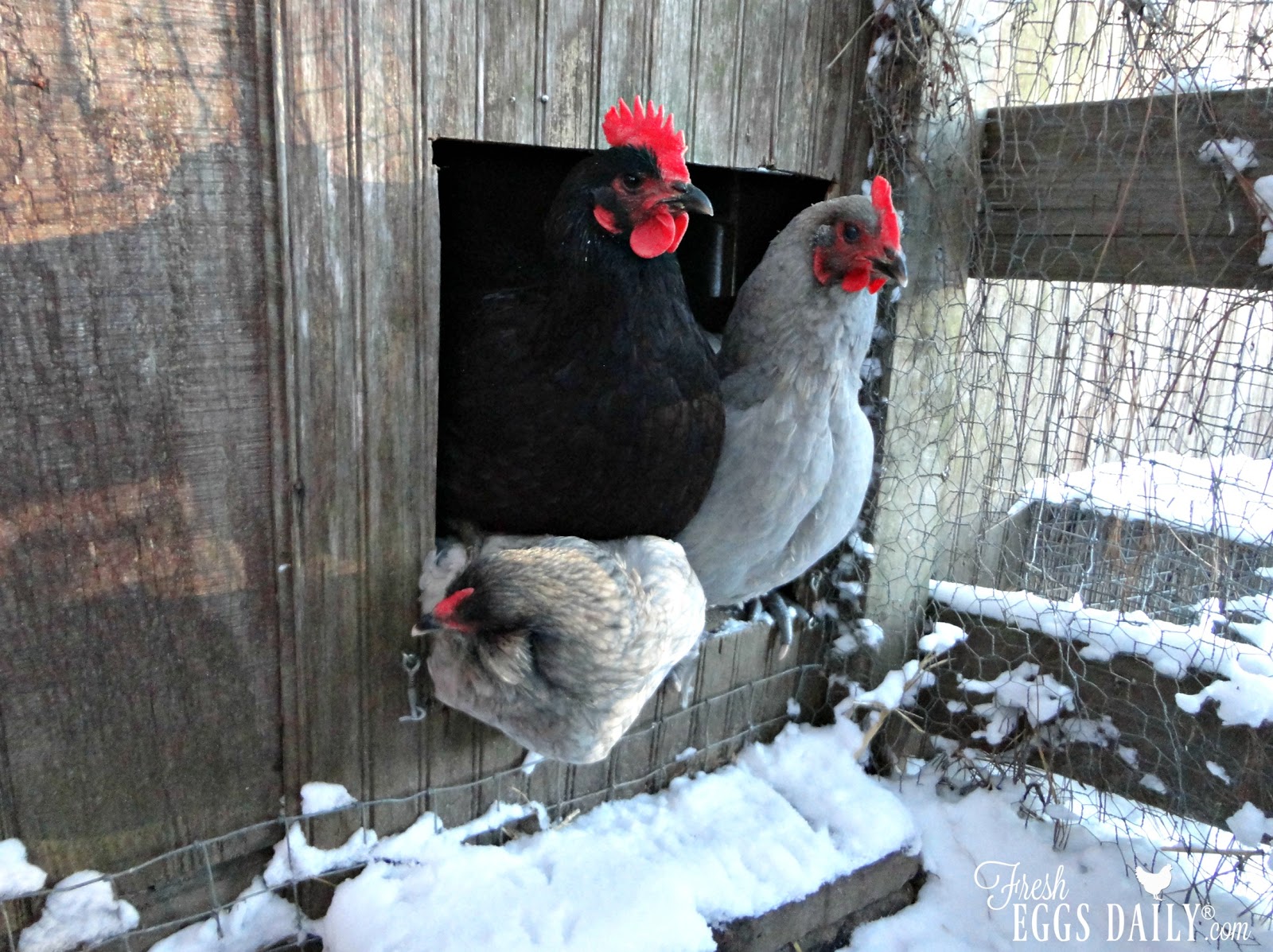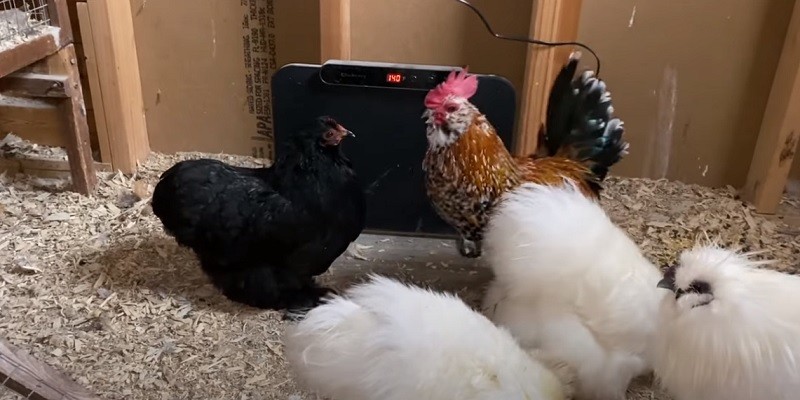To heat a chicken coop, use a heat lamp or heater rated for poultry. Ensure proper ventilation to prevent moisture buildup, which can lead to health issues for the chickens.
Maintaining a warm and comfortable environment is crucial for the well-being and productivity of your flock. Properly heating a chicken coop is essential for ensuring the health and well-being of your poultry, especially during cold weather. Using a heat lamp or heater specifically designed for poultry can provide the necessary warmth.
However, it’s important to balance the warmth with proper ventilation to prevent moisture buildup within the coop. We’ll explore effective ways to heat a chicken coop, ensuring a comfortable and safe environment for your feathered friends throughout the year.
The Importance Of Heating For Chicken Coops
When it comes to raising chickens, ensuring their comfort and well-being is crucial to maintain healthy egg production and overall poultry health. One essential factor in achieving this is understanding the significance of proper heating for chicken coops. Extreme cold weather can have a detrimental impact on chickens, making it vital to maintain optimal coop temperatures for their well-being.
Impact Of Cold Weather On Chickens
Chickens are sensitive to temperature fluctuations, particularly cold weather. When exposed to low temperatures, chickens can experience stress, decreased egg production, and even health issues such as frostbite. It’s important to recognize the adverse effects that cold weather can have on chickens and take the necessary steps to provide a warm and comfortable environment for them to thrive.
The Significance Of Maintaining Optimal Coop Temperature
Ensuring that the chicken coop maintains an optimal temperature is vital for the health and well-being of the birds. This involves providing consistent warmth, especially during colder months, to prevent any negative impact on egg production and overall poultry health. Implementing effective heating measures can help maintain a comfortable environment that promotes the chickens’ natural behavior, reduces stress, and supports their overall welfare.
Factors To Consider Before Choosing The Heating Method
When it comes to heating a chicken coop, there are several important factors to consider before choosing the heating method. Taking these factors into account will help you ensure the safety and well-being of your flock during the colder months. Let’s explore the key considerations to help you make an informed decision.
Climate And Weather Patterns
The climate and weather patterns in your area play a significant role in determining the heating needs of your chicken coop. Consider the average temperatures during the winter months, as well as any extreme weather conditions such as snowstorms or freezing rain. This information will help you determine the type and capacity of the heating system required to maintain a comfortable environment for your chickens.
Size And Structure Of The Chicken Coop
The size and structure of your chicken coop will impact the distribution of heat and the overall effectiveness of the heating method. Take into account the dimensions and layout of the coop, as well as the number of birds housed within it. This information will guide you in selecting the most suitable heating solution for your specific coop design.
Energy Efficiency And Safety Concerns
Prior to choosing a heating method, it’s crucial to evaluate its energy efficiency and safety features. Be sure to consider the potential energy consumption and costs associated with each heating option, as well as any safety hazards that may arise. Striking a balance between efficient heating and ensuring the well-being of your chickens is essential in making the right choice for your coop.
Different Heating Options For Chicken Coops
When it comes to keeping your chickens warm during the colder months, there are various heating options to consider. Different methods can be utilized, including insulation and ventilation techniques, the use of radiant heaters, and heat lamps and heating pads. Each of these options has its own pros and cons, so it’s important to weigh the factors carefully when deciding on the best heating solution for your chicken coop.
Insulation And Ventilation Techniques
Insulating your chicken coop can help retain heat and prevent cold drafts, creating a more comfortable environment for your chickens. Proper ventilation is also crucial to regulate the moisture levels and prevent the buildup of ammonia from chicken droppings, which can be harmful to the birds’ respiratory health. It’s important to strike a balance between insulation and ventilation to maintain a warm, dry, and healthy coop environment.
Use Of Radiant Heaters
Radiant heaters are an effective method for providing direct heat to the chickens without significantly warming the entire coop. They work by emitting infrared heat, which warms the birds and surrounding surfaces. Unlike forced-air or convection heaters, radiant heaters do not circulate dust, dander, or other particles that can affect the air quality in the coop.
Heat Lamps And Heating Pads
Heat lamps and heating pads are commonly used to provide supplemental heat during extremely cold weather. These devices are designed to create localized warmth, ensuring that your chickens have a cozy spot to retreat to when temperatures plummet. However, it’s essential to use these heating elements with caution as they can pose fire hazards if not installed and monitored properly.
Best Practices For Safely Heating A Chicken Coop
As the temperatures drop, ensuring that your chicken coop stays warm and safe for your feathered friends becomes a top priority. Implementing best practices for heating a chicken coop can help create a comfortable and secure environment for your poultry during the chilly winter months.
Monitoring Temperature And Humidity Levels
Monitoring the temperature and humidity levels is crucial for maintaining a comfortable and healthy environment within the chicken coop. Extremes in temperature or humidity can adversely affect the well-being of the chickens. Utilize digital thermometers and hygrometers to accurately measure and maintain the optimal temperature and humidity levels for your flock.
Fire Prevention And Electrical Safety Measures
Implementing fire prevention and electrical safety measures is essential to safeguarding your chicken coop. Ensure that all heating devices are properly installed and maintained. Use only heating equipment designed for agricultural use, and place them away from combustible materials. Regularly inspect electrical wiring and outlets for any signs of wear or damage. Additionally, installing smoke detectors and fire extinguishers in the coop can provide added safety measures in case of emergencies.
Winterizing The Coop And Preparing For Emergencies
Preparing the coop for winter and potential emergencies is crucial for the well-being of your chickens. Winterize the coop by sealing any drafts, insulating walls, and ensuring adequate ventilation to prevent moisture buildup. Have a backup source of heat, such as a generator or heat lamps, in case of power outages. Stock up on essential supplies, including feed, water, and bedding, to be prepared for any unforeseen circumstances.

Credit: www.fresheggsdaily.blog
Frequently Asked Questions On How To Heat A Chicken Coop?
How Can I Safely Heat My Chicken Coop In Winter?
To safely heat your chicken coop, use a flat panel heater and avoid heat lamps.
What Is The Ideal Temperature For A Chicken Coop?
Maintain a temperature of 45-50°F in winter for adult chickens and 70-75°F for chicks.
Are There Any Alternative Heating Options For A Chicken Coop?
Yes, you can use radiant heat panels, heated perches, or heated pads as alternatives.
Can I Use A Heat Lamp To Warm The Chicken Coop?
Avoid using heat lamps due to fire risks and dangers to the chickens.
How Do I Prevent Moisture Buildup When Heating The Coop?
Ensure proper ventilation and use moisture-resistant bedding to prevent moisture buildup.
What Are The Signs That My Chickens Are Too Cold?
Watch for huddling, decreased egg production, and frostbite on combs and wattles.
Conclusion
Heating a chicken coop is essential for keeping your poultry healthy. By using the right heating methods and ensuring proper insulation, you can create a comfortable environment for your birds. Remember to regularly monitor the temperature and opt for safe heating options to prevent any potential dangers.
With these tips, your chickens will stay warm and happy during the colder months.
Last Updated on April 23, 2025 by Pauline G. Carter

